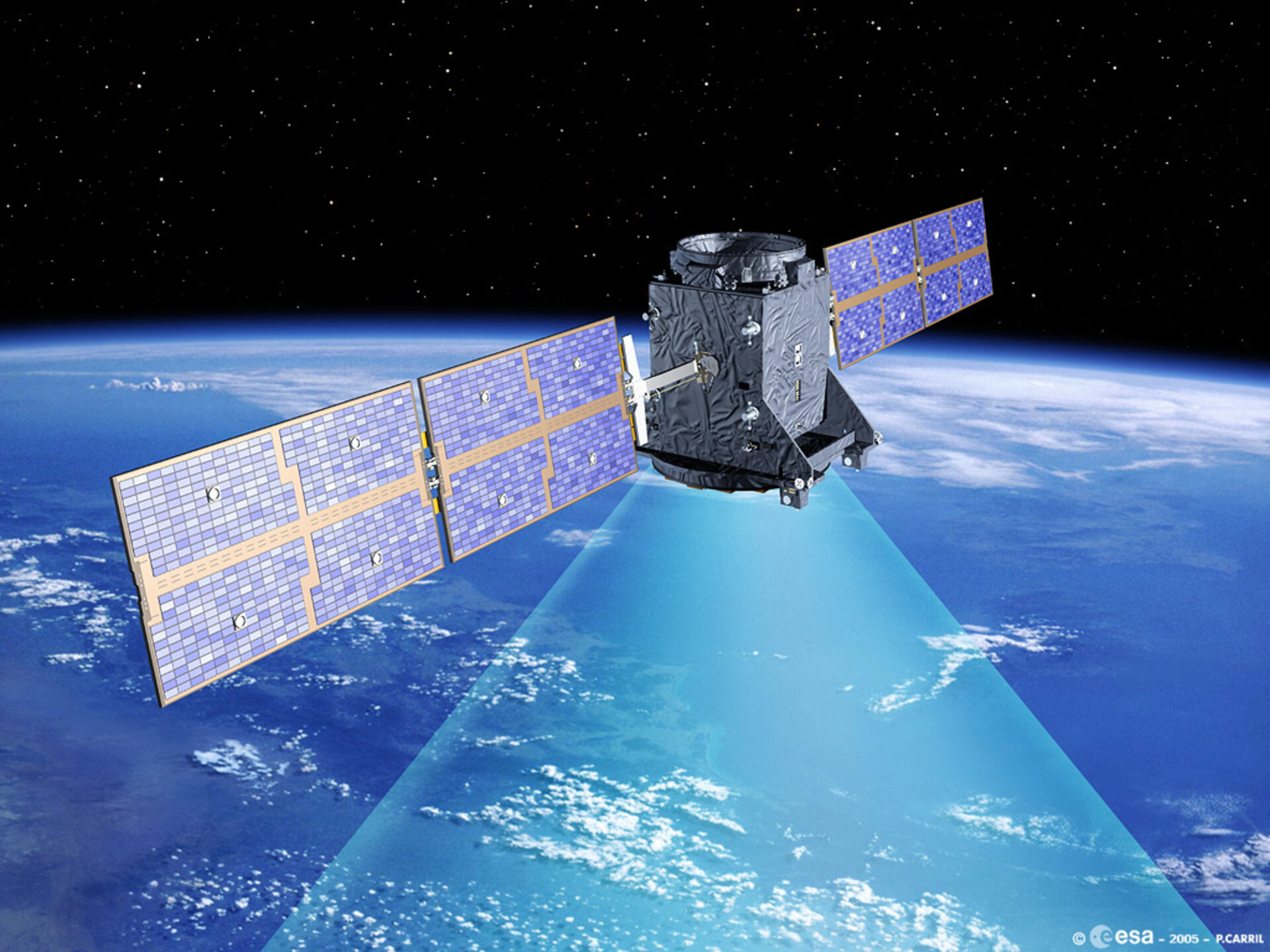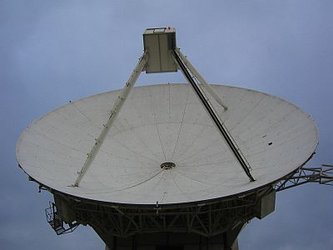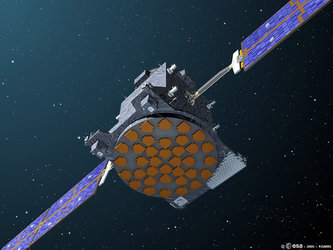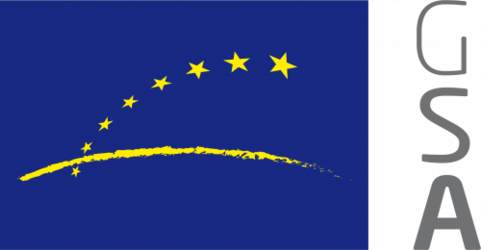GIOVE-A transmits first navigation message
Earlier this week, GIOVE-A successfully transmitted its first navigation message, containing the information needed by user receivers to calculate their position. Prior to reaching this milestone, the satellite had been broadcasting only the data needed for measuring the receiver-to-satellite distance.
The first Galileo navigation message was created by the navigation signal generator unit on board GIOVE-A, using content prepared by the GIOVE Mission Segment. This week-one navigation message was uplinked to GIOVE-A on 2 May from the Guildford ground station operated by Surrey Satellite Technology Ltd (United Kingdom) and then transmitted from the spacecraft to the users. The objective of the test was to demonstrate an end-to-end link between the Mission Segment and the user receivers. The navigation message is being generated for demonstration purposes only – no service guarantee is provided.
The complete radio transmission from GIOVE-A carries a navigation signal and a navigation message. The navigation signal contains the information needed to accurately measure the distance from the satellite to the user receiver. The navigation message provides the timing and spacecraft orbit data needed to calculate the time and exact position of the satellite. One of the main tasks of the GIOVE Mission Segment is the generation of this navigation message.
GIOVE Mission Segment
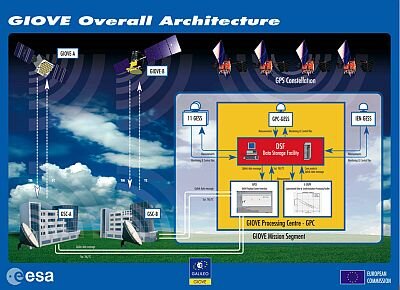
The GIOVE Mission Segment comprises two main elements, a world-wide network of 13 Galileo experimental sensor stations and the GIOVE Processing Centre (GPC) located at ESA’s European Space Research and Technology Centre (ESTEC) in Noordwijk, The Netherlands. The GPC is operated by European Satellite Navigation Industries (ESNIS) – the new name for Galileo Industries.
In order to generate the navigation message, the sensor stations track the signal-in-space from GIOVE-A and send the tracking information to the processing centre. The GPC computes, among other things, the precise satellite flight path and on-board clock model. It then generates a prediction of the orbital path and clock performance for the near-term future, which is the basis of the navigation message. Next, this message is transmitted to GIOVE-A which retransmits it to the user.
Aside from navigation message generation, the primary tasks of the GIOVE Mission Segment are performance characterisation of the on-board clocks, orbit modelling, and operations planning & telemetry analysis for the navigation payload.
Another validation step completed
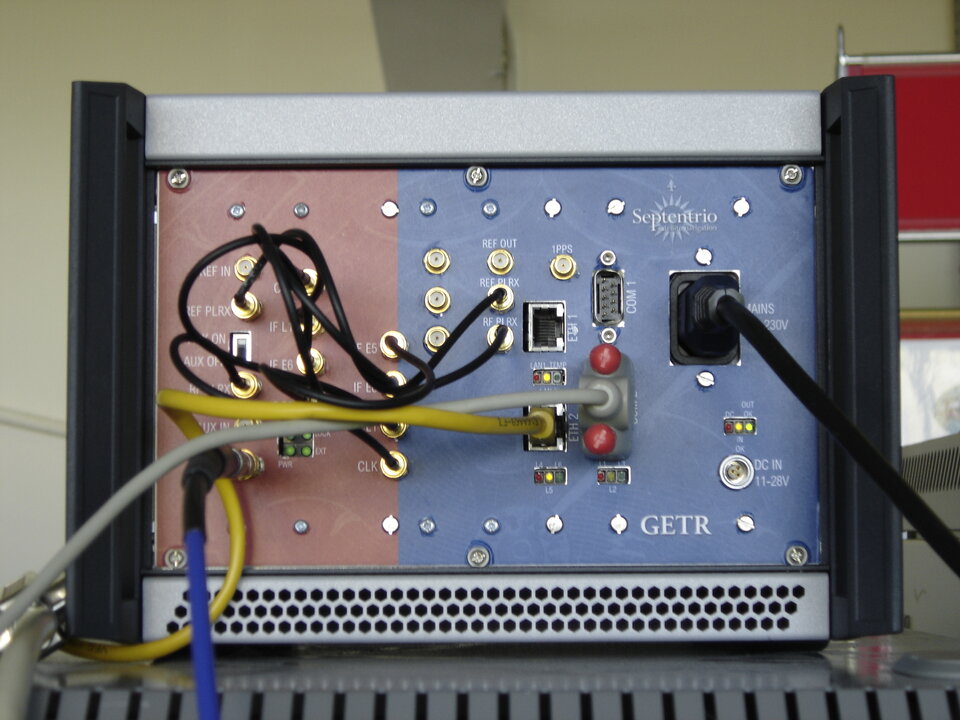
On 12 January 2006, GIOVE A transmitted the first Galileo signals, thereby securing the frequencies allocated to Galileo by the International Telecommunication Union. Now, the transmissions are carrying a navigation message – this means that the satellite is providing information that is needed by a receiver to calculate its position.
Although the navigation message structure of GIOVE-A is slightly different, the GIOVE-A navigation transmissions are fully representative of those that will be sent by the operational Galileo system. The operating principles are identical and the achievement of the first navigation message is another important step in the validation of the Galileo system design.
GPS interoperability
Following this successful test, in the near future GIOVE-A will begin to continuously broadcast the navigation message, with the message content being updated whenever the satellite is visible from the Guildford uplink station. Additionally, the message content will be extended to include the time offset between GPS and the experimental Galileo system. Knowing this offset, the Experimental Galileo-GPS Time Offset (E-GGTO), will allow the user to build a position fix using GPS satellites and GIOVE-A.
Galileo is a joint initiative between ESA and the European Commission. When fully deployed in the early years of the next decade, it will be the first civilian positioning system to offer global coverage.


